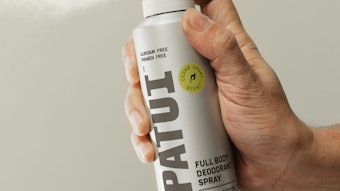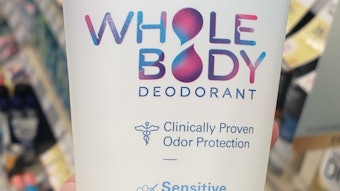
Microbiome-friendly, sustainable and multifunctional solutions are reshaping the AP/Deo industry. Here, experts weigh in on advances like targeted odor control, eco-friendly materials, prioritizing skin health and more.
Log in to view the full article
Microbiome-friendly, sustainable and multifunctional solutions are reshaping the AP/Deo industry. Here, experts weigh in on advances like targeted odor control, eco-friendly materials, prioritizing skin health and more.
The antiperspirant and deodorant (AP/Deo) industry has made a major shift, driven by advances in microbiome science, innovative materials and evolving consumer preferences. Recent academic research, patents and market trends highlight a shift toward sustainable, microbiome-friendly and multifunctional solutions that cater to modern demands for both efficacy and skin health.
Advances in Microbiome Science and Deodorant Innovation
Academic studies have increasingly focused on the role of the skin microbiome in body odor management. Research has shown that body odor results from the bacterial breakdown of sweat compounds, with specific bacteria like Corynebacterium playing a key role. Innovations in microbiome-friendly deodorants therefore aim to selectively target odor-causing bacteria while preserving beneficial skin flora.1-3
For example, Aptamer Group, in collaboration with Unilever, has developed binders designed to neutralize malodor at the molecular level. These binders are precision-engineered to target and inhibit C-S lyase, the key enzyme in skin bacteria responsible for generating body odor. Development work is currently undergoing on-person functionality studies, representing a cutting-edge approach to targeted odor control.4, 5
Patents and Material Innovations
The industry is also seeing breakthroughs in materials science. ICL Group developed a magnesium-based molecule, offering an aluminum alternative that controls bacterial growth without disrupting natural sweat processes, per the company. This patented molecule has been recognized for its eco-friendly and hypoallergenic properties, making it suitable for sensitive skin.6
Similarly, Lume’s whole-body deodorant, inspired by the genetic condition trimethylaminuria, uses mandelic acid to lower skin pH and inhibit odor-causing bacteria. This innovation highlights the potential of pH optimization in deodorant formulations.7
Market Trends and Consumer Preferences
The global deodorant market was valued at US $26.96 billion in 2024, according to Fortune Business Insights. The firm projects it will increase at a CAGR of 5.81% from 2025 to 2032 to reach $42.19 billion.8
Key trends include:9
- Probiotic and prebiotic deodorants: Products incorporating live bacterial cultures or prebiotics to optimize the skin microbiome are gaining traction.
- Sustainability: Refillable packaging and biodegradable materials are becoming standard, with brands like Dirty Hippie leading the way.
- Multifunctionality: Deodorants are evolving to include skin care benefits, such as soothing irritation and reinforcing the skin barrier.
The future of AP/Deo products lies in new approaches to odor control, microbiome-conscious development and multifunctional care concepts. Following, two industry experts weigh in with an insider’s view of the current trends and new directions in this market.
Targeted Microbiome Modulation
Celia Brunel, sales and operational marketing manager of Laboratoires Expanscience, describes the evolution of AP/Deo products. “Deodorants have evolved from masking odors with alcohol-based perfumes, to blocking sweat with aluminum salts”— which, she notes, later raised health concerns.
“Today, the focus has shifted further: consumers now seek aluminum-free, microbiome-friendly solutions that respect skin balance while ensuring effective odor control. These products preserve bacterial diversity, protect barrier integrity and support overall skin health.”
Brunel explains how body odor results from bacteria on the skin breaking down compounds in sweat and releasing odor molecules (for more on this, see Genrich, et al.). While sweat itself is nearly odorless, this bacterial decomposition of its lipids and proteins generates the volatile compounds responsible for unpleasant smells.
“Future directions will focus on targeted microbiome modulation, with deodorants tailored to specific microbial profiles across populations (men, women, post-menopause, sensitive skin, [etc.]). These products will aim not only to reduce odor but also to rebalance microbial ecosystems and support healthier skin.”
To enable such, she points to Laboratoires Expanscience’s Calybiota Bio (INCI: Glycerin (and) Water (Aqua) (and) Bombax Costatum Flower Extract), a water-soluble active that acts on the microbiome. “It improves the ratio of beneficial Staphylococcus to odor-associated Corynebacterium and reduces volatile organic compounds (VOCs) by 56.8%,” she writes. “Tested on T-shirts worn by men over 24 hours, it effectively supports beneficial bacteria while limiting odor-causing microorganisms.”
Skinification Drives Odor Control + Care Benefits
Camille Desperiez, marketing project leader at Silab, looks to multifunctionality in today’s AP/Deo products. “The rise of natural formulas helped shift the deodorant category, but it's the trend of skinification that now drives multifunctional innovations,” she explains.
“While odor control remains a basic benefit, new formulas offer additional skin care properties. Deodorants today can protect and soothe the delicate underarm skin, which is often irritated by shaving and made more sensitive by sweat.”
As a result, per Desperiez, products are evolving to address not just odor, but also skin resilience, reinforcing the skin’s barrier function and reducing irritation. “This marks a new era where deodorants combine hygiene with advanced skin care benefits for overall well-being.”
She adds that recent product launches highlight the growing trend of using deodorants beyond just the underarms, breaking away from traditional taboos. “These innovations promote deodorant application on various parts of the body, such as the chest, back and feet, reflecting consumers’ increasing desire for all-over freshness and odor control. This shift suggests that deodorants designed specifically for the whole body will become more common and accepted in daily routines.”
As societal norms evolve, Desperiez believes the idea of limiting deodorant use to underarms is fading, paving the way for multifunctional products that cater to broader personal hygiene needs across the entire body. One technology enabling such is Silab’s Deolya (INCI: Butylene Glycol (and) Water (Aqua) (and) Spiraea Ulmaria Extract), a natural deodorant and soothing active ingredient derived from meadowsweet.
“Combining hygiene and skin care, it limits odors and relieves irritations of the delicate zone of the underarms,” she explains.
Conclusion
The AP/Deo industry is embracing a new era of innovation, blending microbiome science, sustainable materials and multifunctional benefits to meet evolving consumer demands. From targeted microbiome modulation to aluminum-free and eco-friendly solutions, these advancements are redefining personal care while prioritizing skin health and environmental responsibility. As research and technology continue to advance, the future promises even more personalized, effective and sustainable deodorant solutions.
References
- Teerasumran, P., Velliou, E., Bai, S. and Cai, Q. (2023, Mar). Deodorants and antiperspirants: New trends in their active agents and testing methods. Int J Cos Sci. Available at https://pmc.ncbi.nlm.nih.gov/articles/PMC10946881/
- Callewaert, C. (2015). The science of body odor: Characterization and management of the axillary microbiome. Ghent University. Available at http://hdl.handle.net/1854/LU-5864603
- Urban, J., Fergus, D.J., …Horvath, J.E., et al. (2016, Feb 2). The effect of habitual and experimental antiperspirant and deodorant product use on the armpit microbiome. PeerJ. Available at https://doi.org/10.7717/peerj.1605
- Aptamer Group. (2024, Aug 7). Update on progress in the Unilever partnership. Available at https://aptamergroup.com/update-on-progress-in-unilever-partnership/
- Aptamer Group. (2025, Jul 21). Additional work commissioned by Unilever. Available at https://aptamergroup.com/additional-work-commissioned-by-unilever/
- ICL Group. (2021, Jul 20). No to body odor – The new and innovative award-winning magnesium based molecule for preventing BO. Available at https://www.icl-group.com/blog/revolutionizing-the-deodorant-market/
- Lewis, R. (2024, Apr 4). How Lume whole body deodorant was inspired by a genetic disease. PLOS. Available at https://dnascience.plos.org/2024/04/04/how-lume-whole-body-deodorant-was-inspired-by-a-genetic-disease/
- Fortune Business Insights. (2025, Sep 22). Deodorant market size, share and industry analysis, by product type (spray, roll-on, stick and others), by packaging material (metal, plastic and others), by end-user (men and women) and regional forecast, 2025-2032. Available at https://www.fortunebusinessinsights.com/deodorant-market-102687
- Accio. (Accessed 2025, Oct 8). Trends of probiotic deodorant. Available at https://www.accio.com/business/trends-of-probiotic-deodorant











